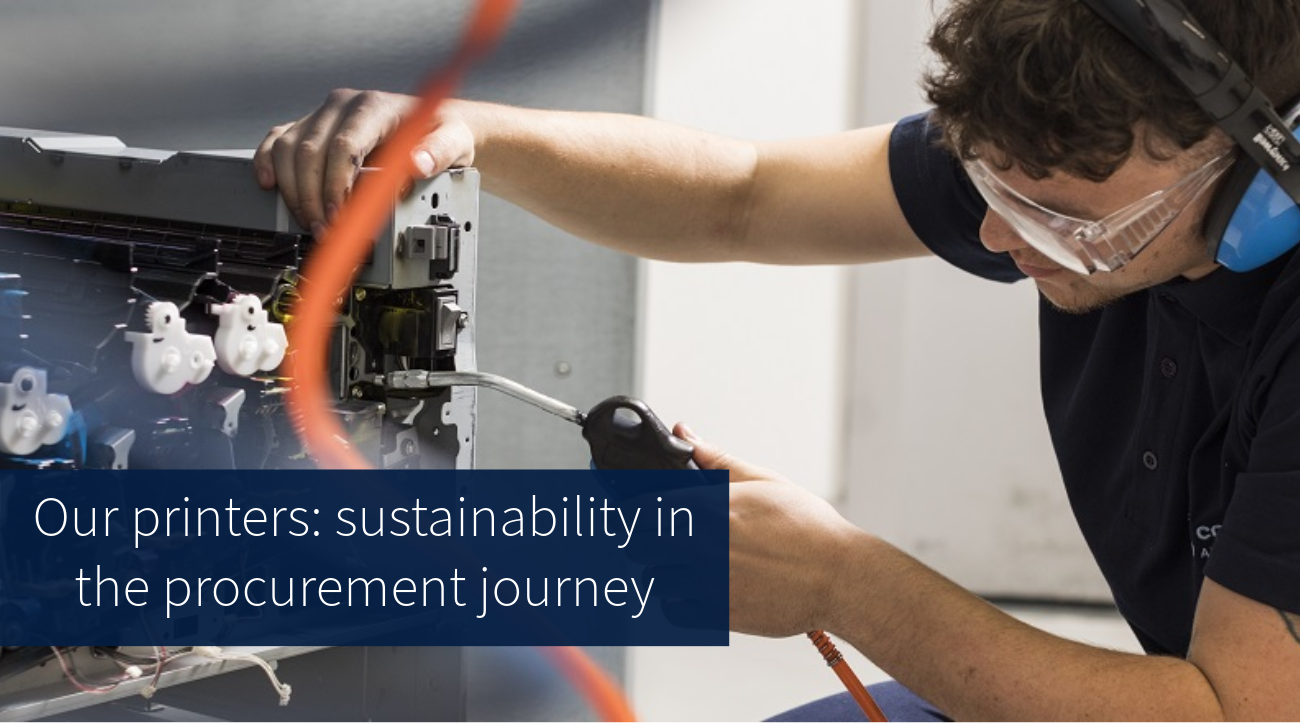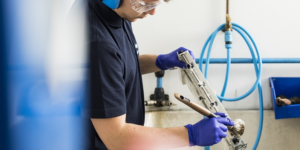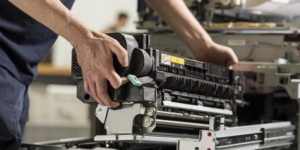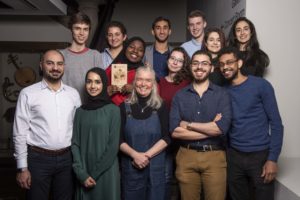Our printers: sustainability in the procurement journey

Discover how we brought sustainability and circular economy thinking to the contract renewal of our campus printing devices.
Hundreds of printers, scanners and similar devices are used every day by staff and students across the University. These are known as multi-function devices, and most are covered by one contract.
The moment a contract is renewed is an important time to reconsider which is the most sustainable and efficient option.
In this case, market research showed a big opportunity to change from leased machines to something better.
How did we do it?
Market research
 Key stakeholders got together to research their options. They discovered that several suppliers now offered the sale of remanufactured units. By extending the lives of old machines, the project leads realised that this could be more environmentally sustainable, as well as lower cost, compared to leasing new devices.
Key stakeholders got together to research their options. They discovered that several suppliers now offered the sale of remanufactured units. By extending the lives of old machines, the project leads realised that this could be more environmentally sustainable, as well as lower cost, compared to leasing new devices.
One supplier – Xerox (external link) – went a step further and was able to offer to refurbish existing University devices rather than source externally. This guaranteed supply and made sure our existing units didn’t end up being thrown away unnecessarily.
Validation
It’s easy to be drawn in by clever marketing (greenwashing). We checked the calculations, the methodology and estimated carbon savings. While older technology can be less energy efficient compared to newer models, the energy savings weren’t enough to outweigh the benefits of reuse in this case.
Once this was confirmed, the detail was built into the specification of requirements (SoR) and fed into the final contract.
Implementation: reusing existing machines
 Through this process, the fleet is now made up of over 75% refurbished units, while the remaining units already have a lifespan beyond the current contract length so do not need to be changed. This is doubling the lifespan of refurbished models. All units will continue to be serviced by the supplier under our new contract.
Through this process, the fleet is now made up of over 75% refurbished units, while the remaining units already have a lifespan beyond the current contract length so do not need to be changed. This is doubling the lifespan of refurbished models. All units will continue to be serviced by the supplier under our new contract.
All units in this contract have a warranty with the supplier for the duration of this contract, which:
- reduces waste compared to if we had switched models,
- reduced carbon emissions by avoiding the leasing of new items, estimated at about 85% of carbon emissions versus a new lease,
- when coupled with the reduction in fleet size, leads to an expected saving of £400k over the course of the new contract.
What are the next steps?
This contract is now live. We want to communicate the impact of this to the wider University, as well as any changes to printing behaviour that may be required, so that the printers are used efficiently to extend the lifespan of these devices.
What can you do?
Extend the life of the printers you use
Look out for information about how to take care of any printers you use to help keep them working for years to come.
Use circular economy principles in your purchases
Think about how reuse, repair and remanufacture can be worked into any contracts due for renewal. This can also be beneficial for smaller-scale contracts.
Submit a case study
Have you made a sustainability purchasing switch you would like to share? Submit a case study by emailing the Department for Social Responsibility and Sustainability at Responsible.Procurement@ed.ac.uk with the subject line: “Responsible procurement case study.”





Recent comments